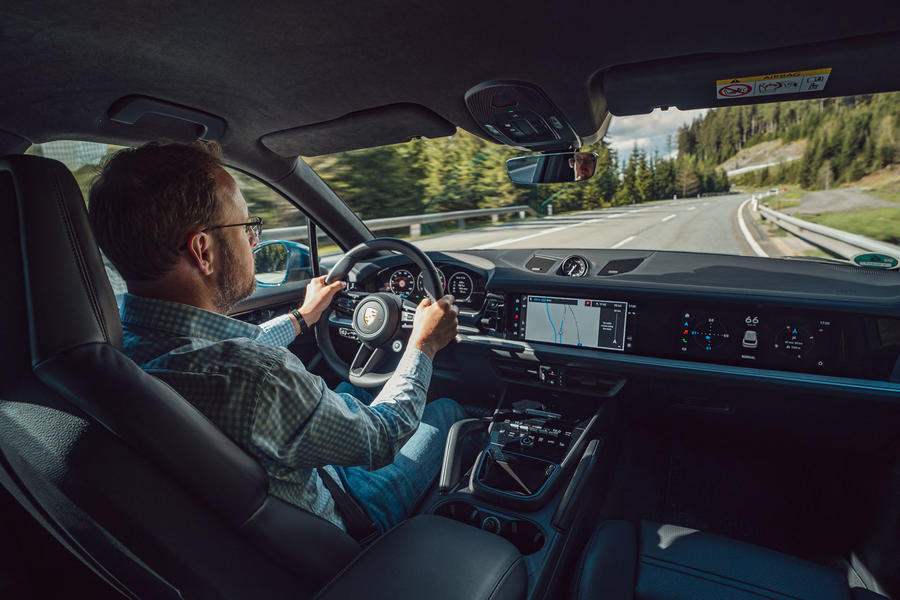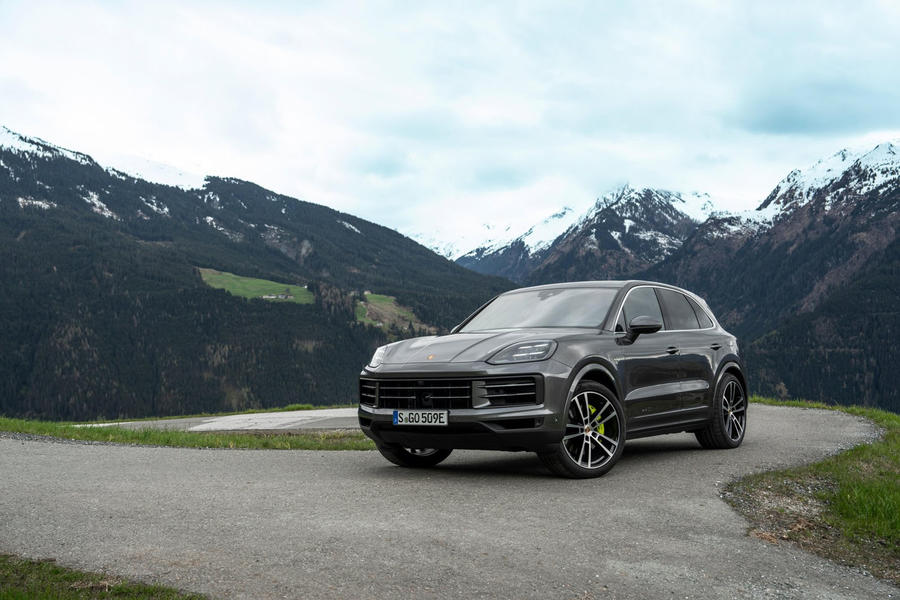Significant redesign inside and out plus mechanical revisions for the brand’s best-seller
With a wealth of engineering changes underneath and visual updates to the body and interior, this Porsche Cayenne facelift isn’t one of those blink-and-you’ll-miss-it surgeries. It’s an impressive effort, especially when the all-new electric Cayenne is only two years away and will ride on a completely separate platform (albeit with the ICE car continuing to be sold alongside it).
The Cayenne remains Porsche’s best-seller, with sales running to more than 1.25 million since launch in 2003, so it isn’t a car on which to sacrifice its hard-won reputation. To that end, the looks have been tightened up and the model range updated. The V6 petrol remains the base Cayenne and the E-Hybrid PHEV should continue to account for about 60% of UK sales. As for the S, its V6 has been swapped for the V8 from the Panamera. You can bet the extra-powerful Cayenne Turbo S E-Hybrid and driver-focused Cayenne GTS will return, but we have to say goodbye to the Cayenne GT Turbo, due to emissions regulations. So there are still plenty of options, depending on how you like your premium SUV flavoured.
The E-Hybrid continues to use a V6 and a 174bhp electric motor, only now there’s a bigger battery to supply the juice. As such, electric only range jumps to a handy 46 miles, dropping it into the 8% BIK tax bracket. It’s a timely riposte to the Range Rover Sport’s company car appeal. The bad news? Kerb weight shoots up by 370kg over the base Cayenne.
![]()
The build and material quality of the comprehensively reworked interior are top-notch (including the lovely metal slider controls for the air vents). There are physical controls still for the heating and ventilation (again, nice metal bits) and there’s now the option of a secondary, 10.9in touchscreen for the front passenger (it’s impossible to see from the driver’s seat). This is a £1061 option, and I would avoid it. Yes, you can watch TV on it and control various other functions, like the music or sat-nav, but there seems little other point to it. It’s hardly a hassle to reach across and tweak the controls on the central touchscreen, is it?
Fully digital dials are now in front of the driver, on a strange, binnacle-less display that looks as if it has forgotten its toupee.
I tried all three variants and would opt for the base V6 if it were my money. Not that it’s cheap, but £67,400 feels almost good value, especially for a Porsche in this day and age. The PHEV makes sense for company car drivers, but you can feel the extra weight in direction changes and it’s lacking that last bit of precision that you expect from a Porsche.
Additionally, the braking feel doesn’t blend between the electric regeneration and physical items. The top of the pedal’s travel is for regen and it’s surprisingly vague, with little initial bite. Most unPorsche-like. An engineer told me they are aware, but there are so many variables around state of charge and other parameters that it’s a nightmare to get it as consistent as they would like.
What’s shared across all three models is a better blend of comfort and handling. The Cayenne now offers two-chamber air suspension as a £1760 option (steel springs are standard) with twin-valve dampers. This is a change from the previous triple-chamber, single-valve set-up and has enabled Porsche to tune the damping compression much more precisely. As such, you get the beautifully flat cornering that is a Cayenne trademark but now with a compliance that belies its bulk and height.
Taken together, it all feels like a significant update and certainly enough to keep the Cayenne interesting until the EV arrives.

Additionally, the braking feel doesn’t blend between the electric regeneration and physical items. The top of the pedal’s travel is for regen and it’s surprisingly vague, with little initial bite. Most unPorsche-like. An engineer told me they are aware, but there are so many variables around state of charge and other parameters that it’s a nightmare to get it as consistent as they would like.
What’s shared across all three models is a better blend of comfort and handling. The Cayenne now offers two-chamber air suspension as a £1760 option (steel springs are standard) with twin-valve dampers. This is a change from the previous triple-chamber, single-valve set-up and has enabled Porsche to tune the damping compression much more precisely. As such, you get the beautifully flat cornering that is a Cayenne trademark but now with a compliance that belies its bulk and height.
Taken together, it all feels like a significant update and certainly enough to keep the Cayenne interesting until the EV arrives.

Source: Autocar